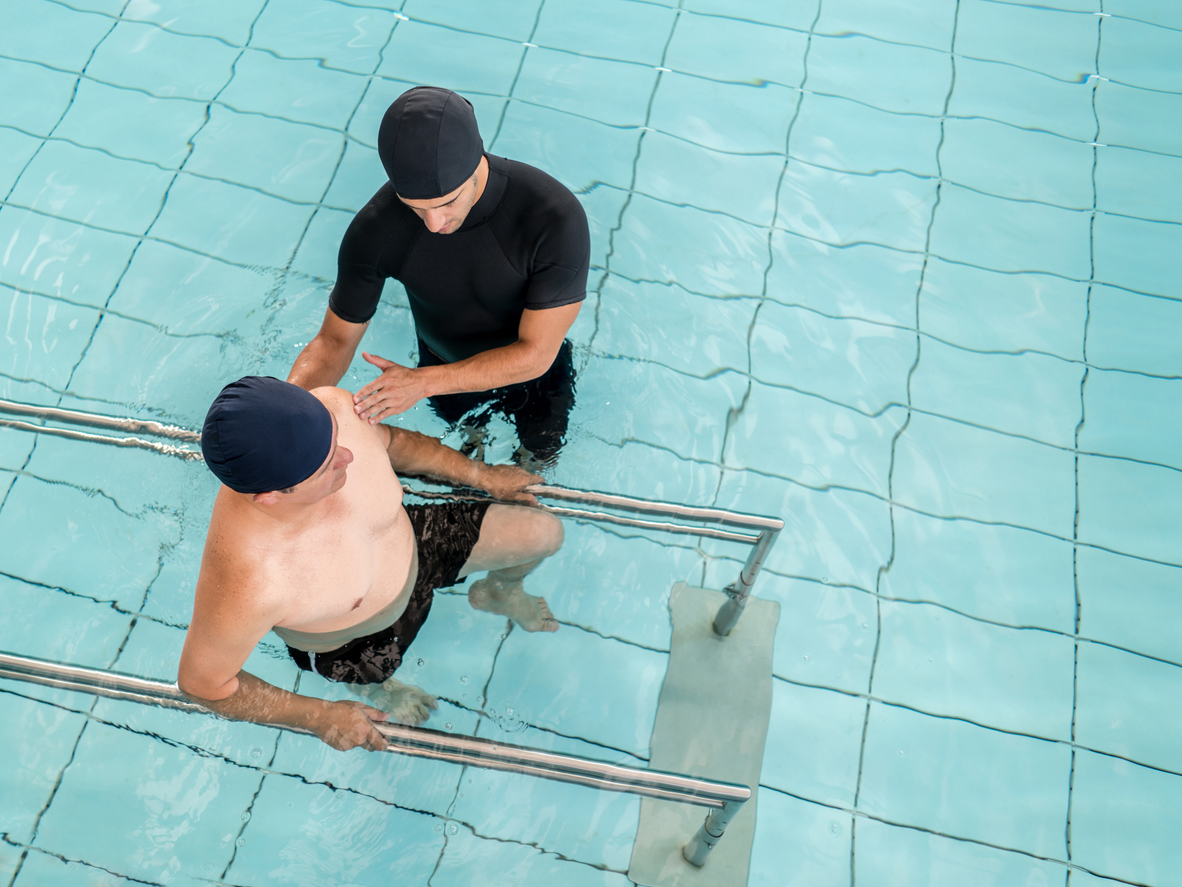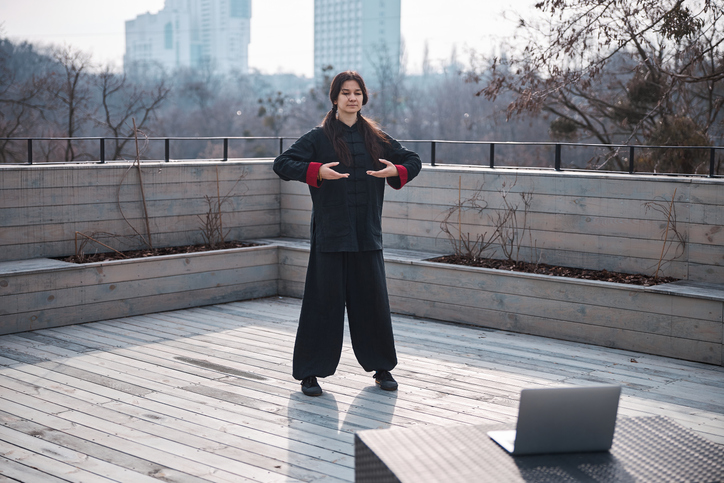Hydrotherapy aka aquatic physiotherapy is a form of alternative physical therapy that uses water to provide relief. It is a natural pain reliever because it increases the level of endorphins in the body. Hydrotherapy exercises have been used for centuries and are still used today for their benefits.
How to Perform Hydrotherapy Exercises?
Hydrotherapy exercises can be done in a swimming pool, hot tub, or bathtub.
There are many benefits of hydrotherapy exercises. They can help speed up the healing process by increasing blood flow to the injured area and improving your range of motion.
Hydrotherapy is also an effective way to manage chronic pain and arthritis. It relieves stress and tension, which is important for people who have been working all day.
Can hydrotherapy for herniated disc help?
Absolutely!. a herniated disc can be effectively treated with hydrotherapy, which is the best non-surgical option. For exercises and advice on treating this injury, see the section below on hydrotherapy exercises. Before carrying out any of the following measures, always seek medical advice.
Hydrotherapy or aquatic physiotherapy utilises the water’s extra buoyancy and heat to create an environment with less pressure and weight. This means there is less force on muscles, joints and injuries overall compared to rehabilitation programs on land. It is employed in cases such as:
- Sports injuries
- Cardiac rehabilitation
- Aerobic fitness
- Elderly patients with decreased mobility
- Burns
Hydrotherapy exercises are the use of water to stimulate healing. The water can be used for a variety of reasons, such as:
-To help with pain relief
-To reduce swelling
-To help with muscle spasms and stiffness
-To increase joint mobility and flexibility
-To increase the range of motion in joints
-For relaxation purposes
You should be aware of what you’ll need in order to begin aquatic exercise now that you know why it’s advantageous for those with chronic back pain who want to stay active.
- For traction on the pool floor, wear water shoes.
- A pool with chest- or waist-high water.
- Any flotation device: This could be a flotation belt or vest or a styrofoam noodle. If you’re exercising in deeper water, this device will assist you to stay afloat, and when you’re in shallow water, it will eliminate stress on your joints.
- Kickboards, foam weights, inflated balls, or webbed water gloves can be used to create resistance for an additional workout.
- Sweating may not be something you’re aware of, but it will still be important to stay hydrated.
Try These 9 Hydrotherapy Exercises:
For safety, proper technique is crucial to practise with a professional trainer who can demonstrate the proper movements for you to maintain proximal trunk stability while enhancing distal extremities mobility. Developing your core muscles should be one of your key priorities because doing so may aid to safeguard your back while going about your regular activities.
1. Walking and lunges
Most likely, you’ll start your water workout with a walk. The American Physical Therapy Association (APTA) advises beginning your forward walking while standing in waist- or chest-high water. Once you’ve warmed up a little, increase your tempo after starting out slowly. Jogging in place is another strategy to intensify your warm-up, advises the APTA. For five minutes, you might also alternate between jogging and walking.
2. four-way hip strength:
As you do your sets, brace your core while securing the pool’s edge with your arms. Start with a series of straight-leg hip flexions, which include kicking your leg in front; extensions, which involve kicking your leg back; adductions, which involve kicking your leg out to the side; and abductions of the hip, which involve kicking your bent leg out to its utmost extent. The resistance will be stronger the deeper the water is and the more power is used against the water. As a result, you will gain more strength in the lumbopelvic area.
3. Lumbar traction
Lumbar traction therapy can help reduce lower back pain in part because it helps lengthen the spine and reduces pressure on the discs. Hydrotherapy exercises provide a perfect environment to implement this protocol. Thanks to the efficiency of this surgical technique, an individual can now choose to handle her/his back injury conservatively rather than opting for surgery.
Exercise: If you start in deep water, non-weight bearing with a flotation device under the arms. Rest in that position and allow your body weight to slowly push against your back for increased space between joints and decreased pain.
4. Lap swimming
Backaches can be relieved by lap swimming, but form and strokes are important. When swimming, keep your head and neck in alignment with your spine, and think about using safety goggles and a snorkel so that your face can stay as much as possible submerged. Start with a stroke that requires less hyperextension—the breast or back stroke—rather than a twisting or spinning action, such as the butterfly or freestyle strokes.
5. Walking with resistance
Having a strong core is key for a person who has had a lumbar disc herniation. Maintaining an active core can relieve pressure from the vertebrae and thereby away from the muscles in your lower back.
Exercise: Here’s how to activate your core in the pool with a couple of simple exercises: walk forward and backwards while using a hydro tone in each hand. This hydrotherapy exercise will force you to maintain the correct pelvic position, giving you a good workout.
6. Wall slides/squats
A squat or wall slide hydrotherapy exercise is another highly functional core activation exercise. Because this is a common motion, such as sitting in a chair and standing up from a chair, practising it is essential.
Squat in the water to practise proper core position, glute activation, and core strength. Performing this hydrotherapy exercise in the water is advantageous since it reduces a person’s body weight and provides a safe environment in the event of a fall. Squatting against a wall, or using a wall slide, can help provide additional support and feedback for the pelvic position.
7. Supine planks
Once strength goals have been met, increasing core muscular endurance is also important. This is one of the best hydrotherapy exercises that can help to activate the core stabilising muscles and teach them how to fire in the proper core position.
Lay supine with floating dumbbells in each hand and under each ankle for exercise. While floating, activate the posterior muscle chain (hamstrings, glutes, low back muscles, scapula stabilisers) and offer the core into the proper position. Hold this position for a few moments before relaxing.
8. Proprioception and balance
This is where Hydrotherapy exercises truly outperform other ones and treatments. Balance and proprioception are important not only for athletes but also for the elderly and those recovering from specific injuries. The extra buoyancy and stability of the hydrotherapy pool allow for more accurate administration of balance exercises. Balance exercises are typically non- or low-impact, but some patients may benefit from impact exercises such as hopping on one leg.
Other common balance hydrotherapy exercises include hip flexion/extension in waist-deep water and single-leg balancing exercises while moving your centre of gravity with a kickboard. When you reach a certain level of proficiency, your physiotherapist may remove the blindfold and ask you to perform any hydrotherapy exercise using your neuromuscular responses rather than your vision.
9. Water Slaps and Kicks Walking
It is advised to engage in some form of sidestepping, so face the pool wall, holding on if necessary, and point your toes and feet straight ahead. Repeat once or twice more by taking 15 steps to one side and 15 steps to the other. 1
Hip kicks and hip swings are good exercises to do after sidestepping. This will increase your strength and hip mobility, both of which are crucial for the health of your lower back. Holding onto the wall if necessary, continue to stand close to it. Maintaining a straight knee, step forward with one leg, then step it back behind you then perform three sets of 10 then repeat with your other leg.





I like reading through a post that can make men and women think. Also, thanks for allowing me to comment!
I am glad that I discovered this web blog, exactly the right info that I was looking for! .